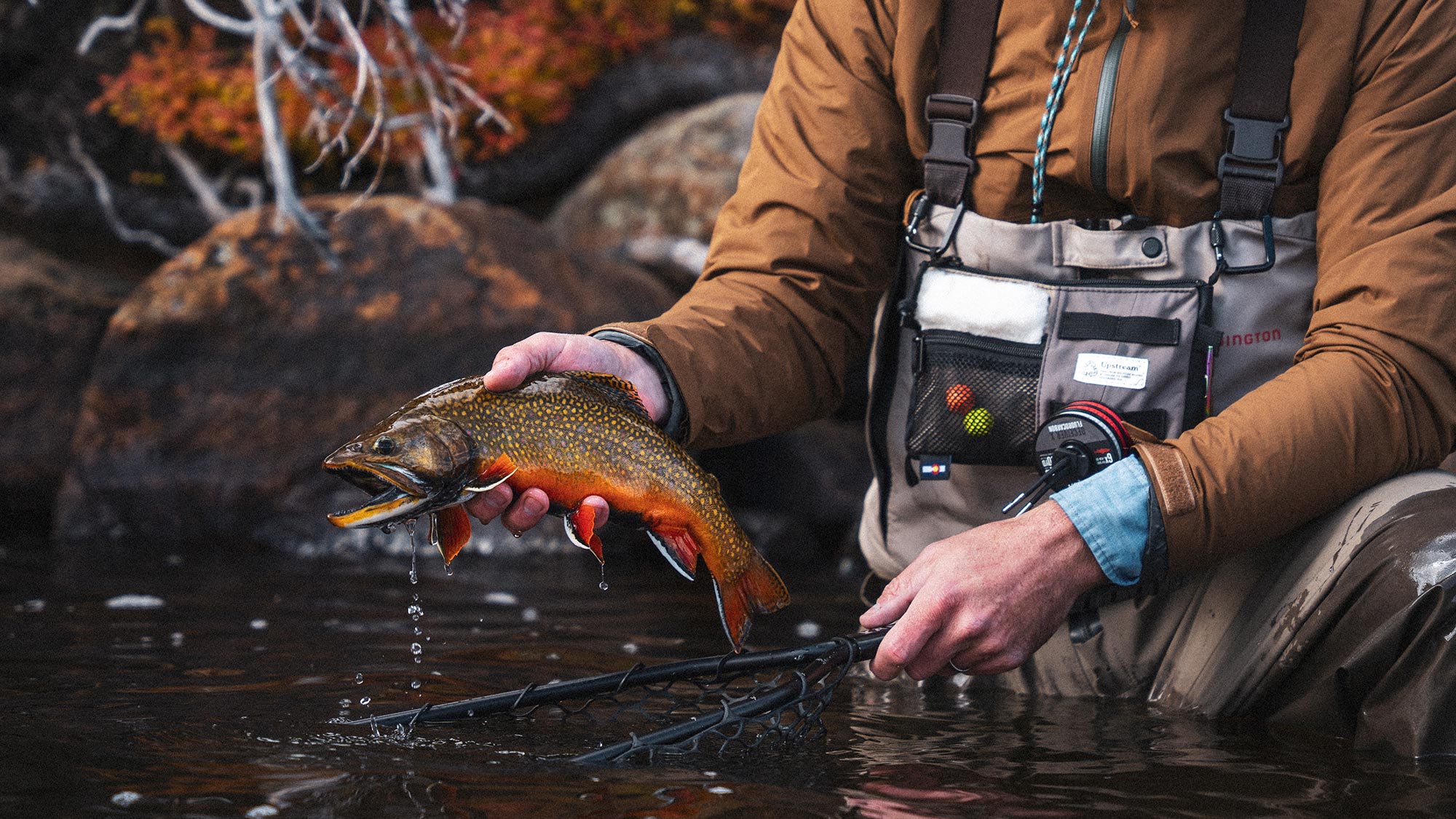WTF is a leech?

Yes, some are parasitic blood suckers but not ones that trout key in on, which make up the vast majority in freshwater ecosystems. Most leeches are small, dark, and ribbon-like, and range in length from 1”-3”. They swim with an undulating motion that’s surprisingly graceful for something so unattractive.
How leeches fit into a trout’s diet
Trout eat leeches because they’re dense in calories, easy to spot, and not particularly fast. They tend to inhabit the bottom of the water column near the stream bed or lake bottom, in search of decaying organic matter, aquatic insect larvae, or even smaller invertebrates. This makes them a perfect target for big, lazy fish conserving energy.
When to fish leeches
Leeches are a viable food source year-round for trout and you should absolutely fish them regardless of the season. Here’s why.
Fall / Winter
Late fall through early spring is prime time for leeches. As air temps cool, trout are programmed to stock up on calories to get through the winter.
This time of year also triggers upstream migration from lakes and other large bodies of water, where leeches are readily available. As they transition into moving water, trout will recognize a leech as a familiar food source. Finally, as water temps drop and trout become more sedentary, leeches—slow swimmers that are high in protein—are a calorie-packed meal that requires minimal effort.
Spring
As water temps rise in the spring, runoff increases stream flows and causes bottom dwellers like leeches to get dislodged from their murky hiding spots and tossed around in the water column. Since the water is often off-color during runoff, dark leech patterns (black, purple, dark brown, dark green) are especially effective since they contrast with the water, making them easier for trout to spot in the turbulence.
Summer
During the summer, leeches remain a staple food source in high-elevation lakes, small creeks, and tailwaters. This time of year, they tend to be more active early in the morning when water temps are lowest, or in deeper, cooler water. They can be a great option during off-peak feeding times or between hatches during the warmer months.
Leeches are one of the few patterns you can fish 12 months a year—and they often work when nothing else is.

How to fish leeches
Leeches are a viable food source year-round for trout and you should absolutely fish them regardless of the season. Here’s why.
Think of leeches as somewhere between a nymph and a streamer. They can be fished under an indicator (or a dry fly) like a nymph, or retrieved with a stripping motion like a streamer but slightly slower.
Stillwater
Use a leech under an indicator for a deadly slow-motion presentation. It’s one of the best early- and late-season stillwater rigs you can fish.
Slow Runs & Tailouts
Leeches tend to drift low and slow. Try a Micro Bugger on a dead drift or a slow strip along the bottom.
Streamer Style
Cast a Little Leech across or downstream, then retrieve with long, slow strips. Add a pause now and then—it’s often the pause that triggers the eat.
Yakoda Leeches

Yakoda Balanced Leech
 Yakoda Little Leech
Yakoda Little Leech

Yakoda Micro Bugger





